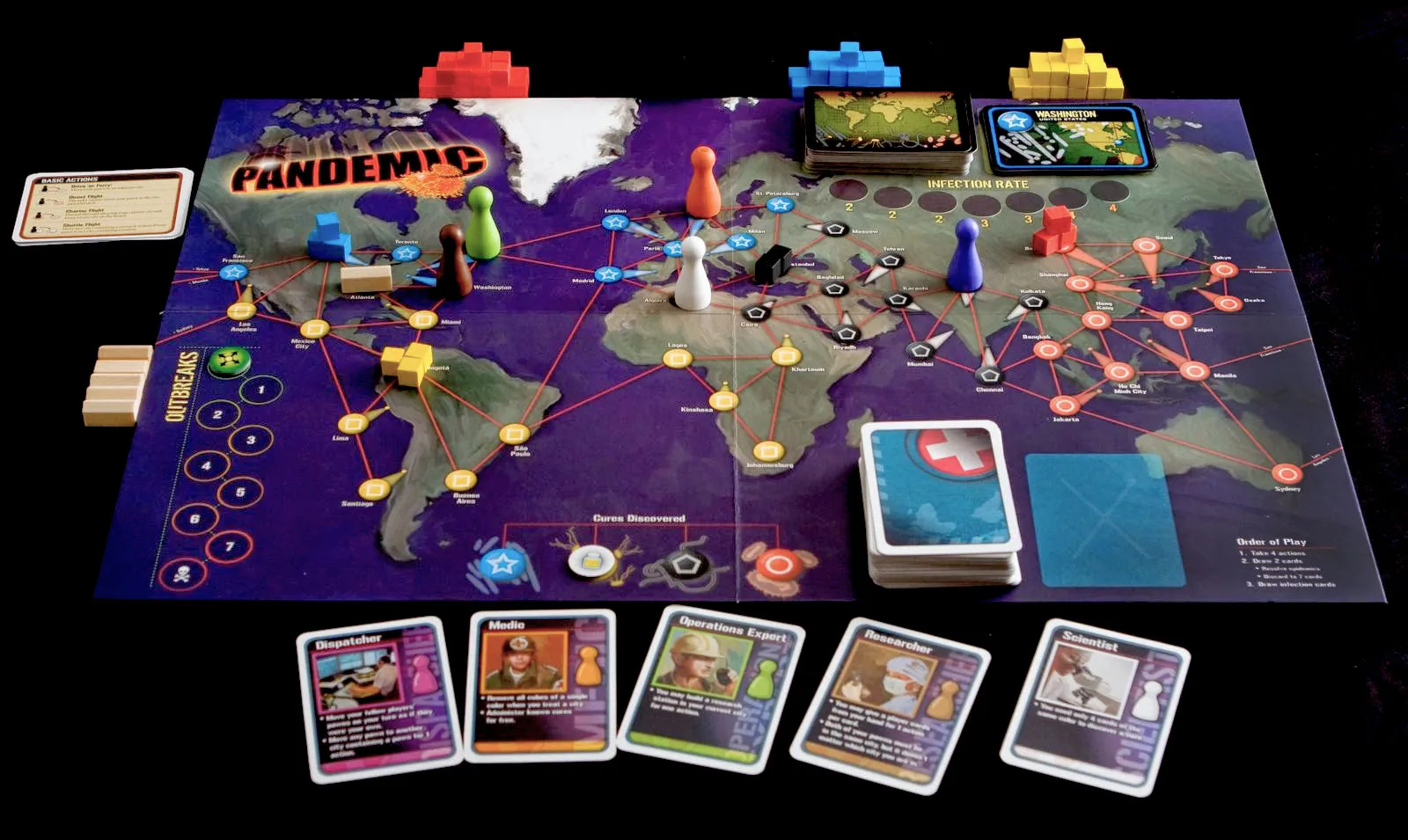
The haunted halls of Betrayal at House on the Hill have captivated players since 2004, creating unforgettable moments of horror and betrayal. Now, designer Rob Daviau has transformed this beloved classic into something even more sinister with Betrayal Legacy.
This reimagining doesn’t just add new mechanics – it weaves a rich tapestry of supernatural horror spanning centuries. The game industry has seen numerous classics receive modern updates, yet few have achieved the delicate balance between innovation and nostalgia quite like Betrayal Legacy.
The Original Betrayal’s Impact
The original Betrayal at House on the Hill carved its place in board gaming history through its unique blend of exploration, storytelling, and sudden betrayal. Players discovered a new mansion layout each game, never knowing which of their fellow explorers would turn against them. This unpredictability created a dedicated following and established the game as a Halloween staple for many gaming groups.
What Betrayal Legacy Brings to the Table
Betrayal Legacy builds upon this foundation while introducing revolutionary changes that elevate the experience to new heights. The question isn’t whether to revisit the haunted house – it’s whether you’re prepared for the generations of horror that await within its walls.
1. Evolution of Gameplay Mechanics
The haunt mechanic remains the heart-pounding centerpiece of Betrayal Legacy, building upon its predecessor’s foundation while introducing refined elements. The game preserves the signature moment when one player becomes the traitor, transforming from ally to adversary. This pivotal transition now features enhanced trigger conditions, creating more balanced and thematic revelations compared to the original’s sometimes abrupt shifts.
Player roles in Betrayal Legacy gain depth through the family legacy system. Each character belongs to a distinct bloodline, carrying inherited traits and abilities that evolve throughout the campaign. This addition enriches the traditional character stats system from the original game, where players simply selected pre-made characters without lasting connections.
The notorious player elimination aspect has been thoughtfully reimagined. While the original game could leave eliminated players waiting extended periods, Betrayal Legacy introduces:
- Ghost mechanics allowing eliminated players to influence the game
- Faster resolution paths for scenarios involving early eliminations
- Strategic choices that can prevent outright elimination
The rules presentation marks a significant improvement over its predecessor. The rulebook now features:
- Color-coded sections for different game phases
- Clear visual examples of common scenarios
- Step-by-step haunt revelation procedures
- Dedicated quick-reference cards for core mechanics
These layout enhancements benefit both newcomers and veterans. New players can grasp core concepts through intuitive visual guides, while experienced players appreciate streamlined reference materials for complex scenarios. The revised rulebook structure reduces downtime during crucial moments, particularly during the haunt transition.
The game’s physical components reflect this evolution in design philosophy. Cards now display relevant information more prominently, tiles feature improved iconography, and character sheets incorporate legacy elements seamlessly. These refinements maintain the game’s atmospheric tension while reducing mechanical friction that occasionally plagued the original.
2. Narrative Depth and Campaign Structure
Betrayal Legacy turns the haunted house experience into a complex story that spans multiple generations, from 1666 to 2004. Players become fully engaged in their family’s narrative across 14 interconnected chapters, each uncovering new aspects of the house’s dark past. The campaign structure enables players to see how their actions affect the future, creating a one-of-a-kind story for every gaming group.
Family Dynamics and Character Development
Family relationships are at the forefront as players take on the roles of various generations within the same family. Each character possesses traits, motivations, and backstories that evolve based on the events of previous chapters. These personal connections add emotional weight when family members experience betrayal or make sacrifices for one another, enhancing the traditional horror elements.
Permanent Changes and Customization
The legacy system introduces lasting modifications that influence future gameplay:
- Heirloom Items: Objects gain power through significant events, becoming treasured family possessions with unique abilities
- Room Modifications: Physical changes to the house persist between games
- Family Records: A chronicle documents victories, deaths, and betrayals across generations
Players make important choices that permanently impact the game components. Stickers alter cards, rooms are destroyed or sealed off, and new rules emerge from chapter to chapter. These alterations create a tailored experience where every gaming group’s house tells its own distinct story.
Interconnected Gameplay Mechanics
The legacy mechanics influence gameplay through:
- Inherited traits passing down through family lines
- Discovered secrets unlocking new game mechanics
- Ritual completion affecting future scenarios
- Character deaths influencing available choices
This intricate web of cause and effect fosters a deeply personal investment in the fate of the house. Players feel genuine tension knowing that their decisions will resonate through countless game sessions, making each choice significant and impactful.
3. Expanding the Game World
Betrayal Legacy goes beyond the haunted mansion and introduces larger outdoor areas for exploration. Players can now venture into the surrounding grounds of the house, which include:
- A creepy graveyard filled with restless spirits
- An enigmatic garden holding ancient secrets
- A perilous cliff overlooking dark waters
- An unsettling boathouse with hidden passages
These new locations offer exciting gameplay opportunities and fresh tactical options for both survivors and traitors. The expanded game board allows for more varied haunt scenarios and escape routes, adding depth to each session.
The supernatural encounters have also evolved beyond traditional ghost stories. Players now face:
- Dimensional rifts that alter reality
- Ancient curses passed down through generations
- Otherworldly beings seeking to claim the house
- Dark rituals that must be completed or stopped
The inclusion of non-player characters (NPCs) brings life to the haunted house. These inhabitants can be helpful allies or dangerous enemies, each with their own motivations and secrets. Players must carefully consider how they interact with these characters, as their choices can:
- Reveal hidden knowledge about the house’s history
- Provide important items or information
- Trigger unexpected plot developments
- Create lasting alliances or enemies
The NPCs drive the storytelling forward, forcing players to make tough decisions that impact future games. An innocent encounter with the mysterious groundskeeper could come back to haunt players several generations later.
This expanded world adds more layers of horror and mystery, where every room, outdoor area, and character contributes to the unfolding story. As players navigate both physical and social landscapes, the strategic possibilities increase, making each playthrough one-of-a-kind and unpredictable.

4. Addressing Original Game Issues
The original Betrayal at House on the Hill had several mechanical problems that affected how much players enjoyed the game. During the haunt phase, balance issues often came up where certain scenarios heavily favored either the traitor or the survivors. Betrayal Legacy solves these problems through improved game design:
Mechanical Improvements:
- Combat system made simpler with clearer outcomes
- Items distributed evenly throughout exploration
- Difficulty adjusted based on number of players
- Haunt triggers refined to consider game state
The legacy format allows for deeper strategy through permanent consequences. Players who lose a specific scenario might gain advantages in future games, creating a natural balancing mechanism that spans the entire campaign.
Gameplay Driven by Choices
Each game session presents players with important decisions that shape both immediate outcomes and future possibilities:
- Room placement decisions affect exploration patterns
- Character development through family traits
- Strategic use of heirloom items
- Multiple paths to victory in most scenarios
The dice-based skill checks are still a core part of the game but now include additional factors that reward tactical thinking. Players can overcome bad luck by managing their resources carefully and positioning themselves strategically.
Dynamic Design of Scenarios
The haunt scenarios in Betrayal Legacy show significant improvements in balance and engagement:
- Each scenario has multiple victory conditions
- Previous game outcomes affect the difficulty level
- Struggling players have built-in catch-up mechanics
- Future games are influenced by interconnected narrative consequences
These improvements create a more cohesive experience while still keeping the unpredictable nature that made the original game compelling. The clearer rulebook reduces confusion during critical moments, allowing players to focus on strategy instead of interpreting rules.
The game’s legacy elements introduce permanent changes that feel meaningful without overwhelming new players. Each modification to the house or game rules builds upon previous experiences, creating a sense of progression that was missing in the original version.
5. Post-Campaign Enjoyment
Once you finish the main campaign of Betrayal Legacy, a whole new world of gaming opens up. The game shifts into a fully interactive “free play” mode, where you can explore unique scenarios that combine elements from your entire campaign journey. Get ready to dive into 13 distinct haunts specially crafted for post-campaign adventures, each featuring various locations, items, and mechanics that you discovered throughout the legacy experience.
Advantages of Post-Campaign Scenarios
These post-campaign scenarios offer distinct advantages:
- Customized House Configuration – Players can arrange room tiles based on their campaign choices, creating personalized haunted houses
- Inherited Items – The ability to use accumulated heirloom cards adds strategic depth
- Family History – Character choices reflect the rich backstory developed during the campaign
The board game community has embraced Betrayal Legacy’s post-campaign content through various channels. Board game forums are buzzing with discussions about optimal strategies, unexpected combinations, and memorable moments. Players are sharing their unique house configurations, creating an informal database of tested layouts and approaches.
Community Engagement Beyond Gameplay
The community engagement extends beyond gameplay discussions:
- Fan-created scenarios
- Custom house rules
- Modified victory conditions
- Hybrid game modes combining elements from different haunts
This collaborative atmosphere has led to the development of player-made content that extends the game’s lifespan. Groups are sharing their campaign stories, creating a rich tapestry of shared experiences that enhance the game’s mythology. The varied interpretations of events and outcomes add layers of depth to future playthroughs.
Rob Daviau’s Commitment to Long-Term Value
The post-campaign design demonstrates Rob Daviau’s commitment to long-term value, as noted in his designer diary. The game maintains its appeal through emergent storytelling opportunities and the continuous discovery of new combinations within established mechanics. Each post-campaign session writes a new chapter in the house’s history, building upon the foundation laid during the legacy campaign.

Conclusion
Betrayal Legacy is a great example of how classic board games can evolve while still keeping their charm. The game’s innovative approach to storytelling, improved mechanics, and legacy elements make it even better than the original game.
The successful transformation of Betrayal at House on the Hill into a legacy format shows that other beloved games can also undergo similar changes. By combining familiar mechanics with new features, it provides a guide for future game designers who want to reimagine classic titles.
The game industry continues to push boundaries, yet Betrayal Legacy proves that innovation doesn’t require sacrificing nostalgic elements. Its success lies in understanding what made the original game special while addressing its shortcomings through:
- Deeper narrative integration
- Refined mechanical systems
- Meaningful player choices
- Enhanced replayability
This delicate balance between old and new sets a high standard for future legacy games, showing how beloved classics can be transformed into fresh experiences that resonate with both veteran players and newcomers alike.
If you want to learn more about history and evolution of legacy and campaign based mechanics check our in depth guide – Games That Evolve: The History and Future of Legacy & Campaign-Based Board Games.




